Two Roman Ships that Were Lost in WWII: What Destroyed the Floating Palaces of Emperor Caligula?
This is one of the most tragic stories about remarkable ancient artifacts you will ever read. After reading this article, you may have dreams about impressive ancient Roman ships that survived many centuries, only to be destroyed during World War II.
The ships built by the mad emperor Caligula in the 1st century AD looked like floating palaces. They were found at Lake Nemi and had everything that was characteristic of the hedonistic style of the Ptolemaic Period or the wealthy rulers of Syracuse (whose style inspired many bold feats in the ancient world.) This is what archaeologists recovered in 1929. However, fate soon gave the ships a tragic end.
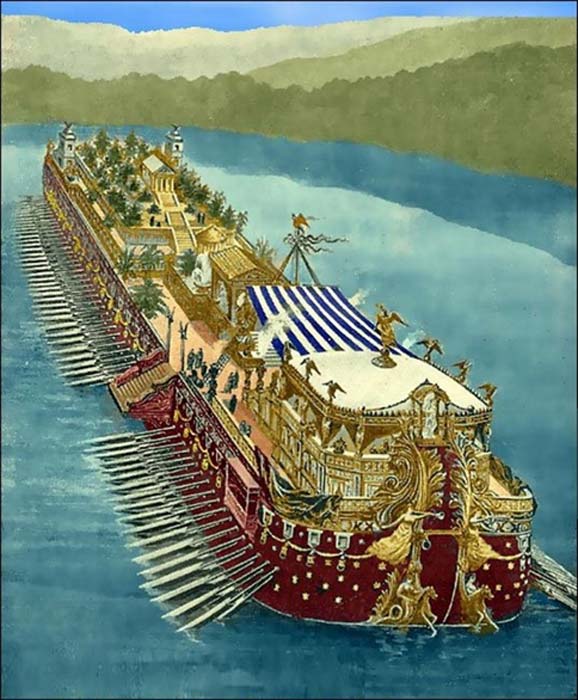
Imaginative depiction of one of the Nemi ships. Image courtesy of Ken Seamon
Discovering Caligula's Ships
Caligula had many unique ideas about religion; he followed the cult of Isis, but also loved Alexander the Great and imagined he could be his reincarnation. Two of his biggest desires were to be richer and to create more luxurious buildings than his ancestors. It is unknown why Caligula decided to make these ships, but it was likely his vanity. The impressive ships had amazing treasures and incredible decoration. They were like floating palaces with mosaic floors, a heating system, marble decorations, baths, etc.
- Ancient Journeys: What was Travel Like for the Romans?
- More Evidence that Ancient Romans May Have Made It to Oak Island, Canada
- The Well-Preserved Wreck of the Formidable Warship Mars
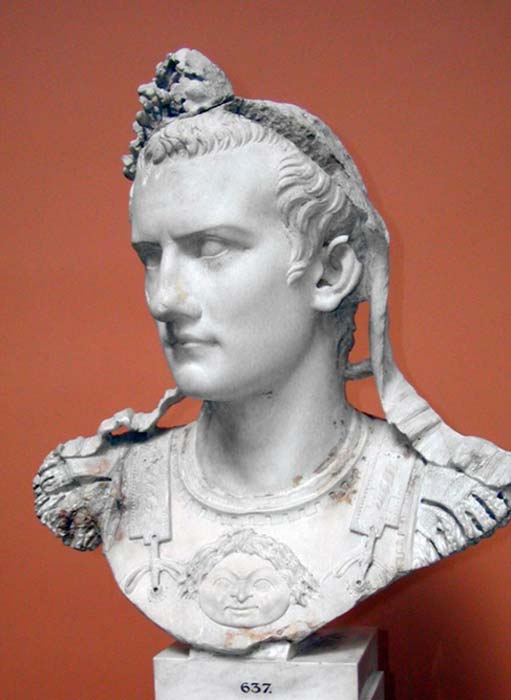
Reconstructed bust of the Emperor Gaius, known as Caligula. (CC BY-SA 3.0)
Lake Nemi is a small volcanic lake located in Lazio region. It is only 30 km (19 mi) south of Rome and was readily available to the ancient ruler of the Roman Empire.
The ships hadn't been lost for many centuries. Their location was known in the 15th century, when one of the most unexpected excavations in history took place. It is known that in 1446 an unusual expedition was led by Cardinal Prospero Colonna and Leon Battista Alberti. They analyzed resources and were able to locate the famous ships. At a depth of 18.3 meters (60 ft.), the first ''scuba divers'' tried to explore the site using a diving bell. The adventurous individuals who went to the sunken ships discovered bricks, copper, bronze, several artifacts, timber beams, and marble. The site became a source of precious artifacts. Most of them were sold and their fate remains unknown.
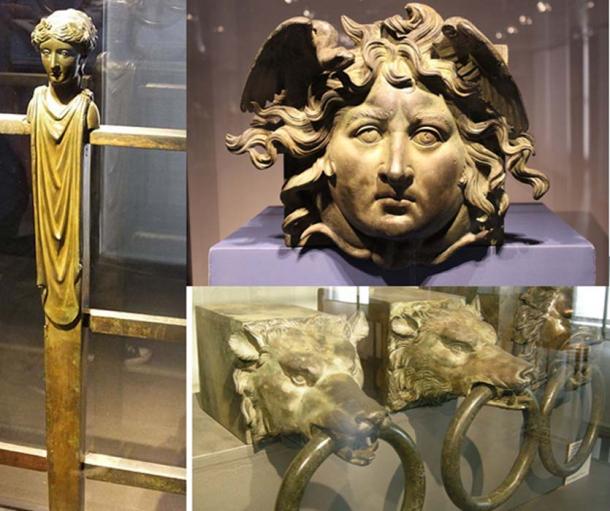
Some of the decorations from the Nemi ships: A bronze railing (CC BY SA 2.0), a face (Miguel Hermoso Cuesta/CC BY SA 3.0), and brass rings recovered in 1895. These were fitted to the ends of cantilevered beams that supported each rowing position on the seconda nave. (CC BY SA 3.0)
After several centuries of this looting, professional researchers started to work on one of the most remarkable projects in the 19th century – the recovery of the two ancient ships. Finally, in 1927, by the order of the Italian dictator Benito Mussolini, the specialists drained the lake and recovered the ancient vessels. They became a fascinating topic for the media and the main feature of an incredible museum dedicated to their history.
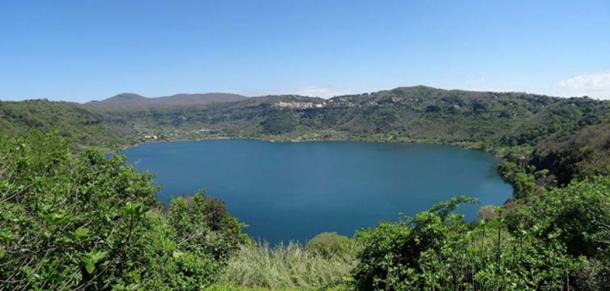
View of Lake Nemi from the Sacred Way. (CC BY-SA 3.0)
The Legendary Ships of Beauty
The first ship, mentioned in the literature as Prima nave, was 70 meters (230 ft.) long with a beam width of 20 meters (66 ft.), while Seconda nave (the second ship) was 73 meters (240 ft.) in length and had a beam width of 24 meters (79 ft.).
What did they look like? Apart from the rich material related to excavations, we can use the description of the ship that inspired Caligula's builders. The famous ship of Ptolemy IV Philopator, the king of Egypt who lived between 245 – 204 BC:
''As one first came on board at the stern, there was set a vestibule open in front, but having a row of columns on the sides; in the part which faced the bow was built a fore-gate, constructed of ivory and the most expensive wood. Entering this, one came upon a kind of proscenium which in its construction had been roofed over. Matching the fore-gate, again, a second vestibule lay aft at the transverse side, and a portal with four doors led into it. On both sides, left and right, potholes were set beneath to provide good ventilation. Connected with these entrances was the largest cabin; it had a single row of columns all round, and could hold twenty couches. The most of it was made of split cedar and Milesian cypress; the surrounding doors, numbering twenty, had panels of fragrant cedar nicely glued together, with ornamentation in ivory. The decorative studs covering their surface, and the handles as well, were made of red copper, which had been gilded in the fire. As for the columns, their shafts were of cypress-wood, while the capitals, of the Corinthian order, were entirely covered with ivory and gold. The whole entablature was in gold; over it was affixed a frieze with striking figures in ivory, more than a foot and a half tall, mediocre in workmanship, to be sure, but remarkable in their lavish display. Over the dining-saloon was a beautiful coffered ceiling of Cyprus wood; the ornamentations on it were sculptured, with a surface of gilt. Next to this dining-saloon was a sleeping apartment with seven berths, adjoining which was a narrow passage-way running transversely from one side of the hold to the other, and dividing off the women's quarters. In the latter was a dining-saloon, with nine couches, which was similar to the large saloon in magnificence, and a sleeping-apartment with five berths.''
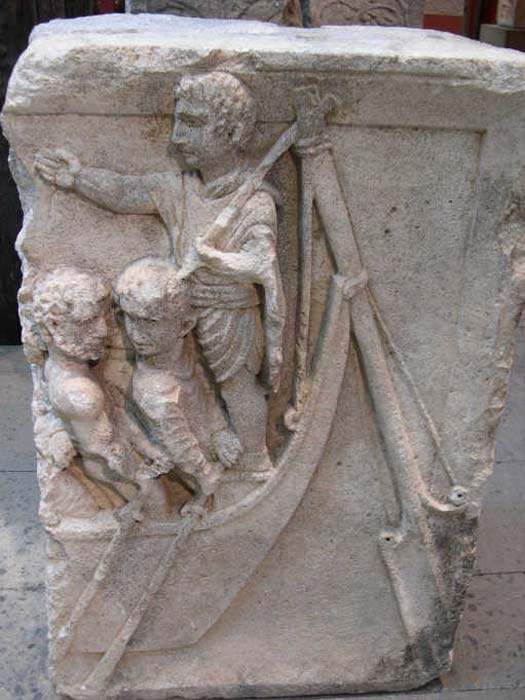
Stern-mounted rudder of a Roman boat, 1st century AD (RG-Museum, Cologne). (Public Domain)
Caligula’s vessels were perfect examples of the best of ancient Roman shipbuilding. The Prima nave was a smaller ship, full of corridors and rooms. In fact, both ships had a complicated construction for unknown use. The Seconda nave was larger and had some structures on it. However, it is unknown in detail what kind of constructions were placed on that ship. One option that researchers suggest is a temple of Diana.

Reconstruction of Nemi Ship A. (CC BY-SA 3.0)
The Final Chapter of the Nemi Ships’ History
In 1944, all the world was touched by a war that had already lasted for five years. Sadly, the tragedy of war also had an impact on the famous wrecks. It was the night of May 31 when the museum was hit by the United States Army’s shells. The German artillery was destroyed, but the fire covered the entire museum and the ships too. The precious ships and their treasures were lost forever.
- 22 Shipwrecks spanning Ancient Era to the Renaissance discovered at Aegean archipelago
- The Antikythera Shipwreck – The Titanic of the Ancient World and its Sunken Historic Treasure
- 1600-Year-Old Cargo of a Roman Merchant Ship has been Discovered in Caesarea
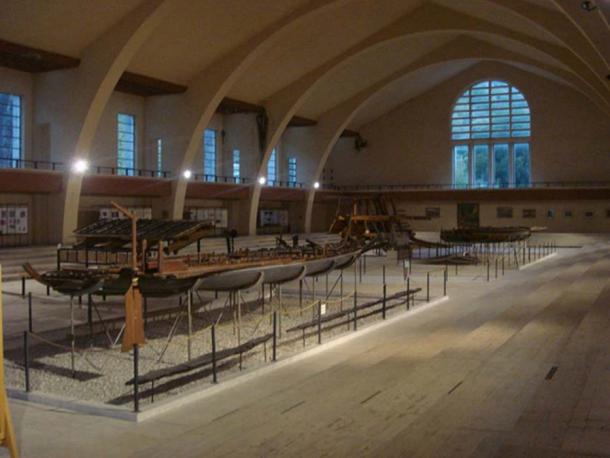
Nemi ships museum. (CC BY-SA 3.0)
After centuries of being protected by the lake, the cruelty of war destroyed these beautiful ships forever. Project Diana was launched by the Association Dianae Lacus (Lake of Diana Association) to preserve the historical treasures of Nemi Lake. The primary goal of the association (which was created in 1995) is to build a full-sized replica of the Prima nave ship.
The reign of Caligula was extremely expensive for the citizens of Rome. However, due to his attention to luxury and beautiful items, the period of his short rule (37 – 41 AD) is also one of the most fascinating. Unfortunately, Caligula’s fame didn't bring the expected support for Project Diana, which has mostly failed so far.
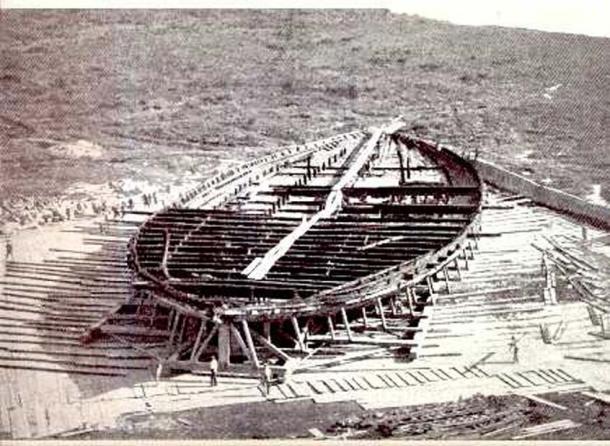
The remains of the hull of one of the two ships recovered from Lake Nemi. Workers in the foreground give an indication of scale. (Public Domain)
Top image: Ancient Roman bronze face in the Palazzo Massimo alle Terme from the Nemi ships. Source: Miguel Hermoso Cuesta/CC BY SA 3.0 and Artistic rendition of Caligula’s ships on Lake Nemi. Source: Mamma Maria’s Walking Tours
References:
Caligula's Nemi Ships, available at:
https://www.abc.se/~pa/mar/nemships.htm
Roman Emperor Caligula and His Legendary Lake Nemi Ships by Kathy Warnes, available at:
http://historybecauseitshere.weebly.com/roman-emperor-caligula-and-his-legendary-lake-nemi-ships.html
World War 2, available ate:
https://allthatsinteresting.com/tag/world-war-2
The Nemi Ships, available at:
http://penelope.uchicago.edu/~grout/encyclopaedia_romana/miscellanea/nemi/nemi.html
Italians viewing antique Emperor Caligula's Nemi ships, 1932, available at:
http://rarehistoricalphotos.com/caligula-nemi-ships-1932/
Zdzisław Skrok, Archeologia mórz, 1982.
















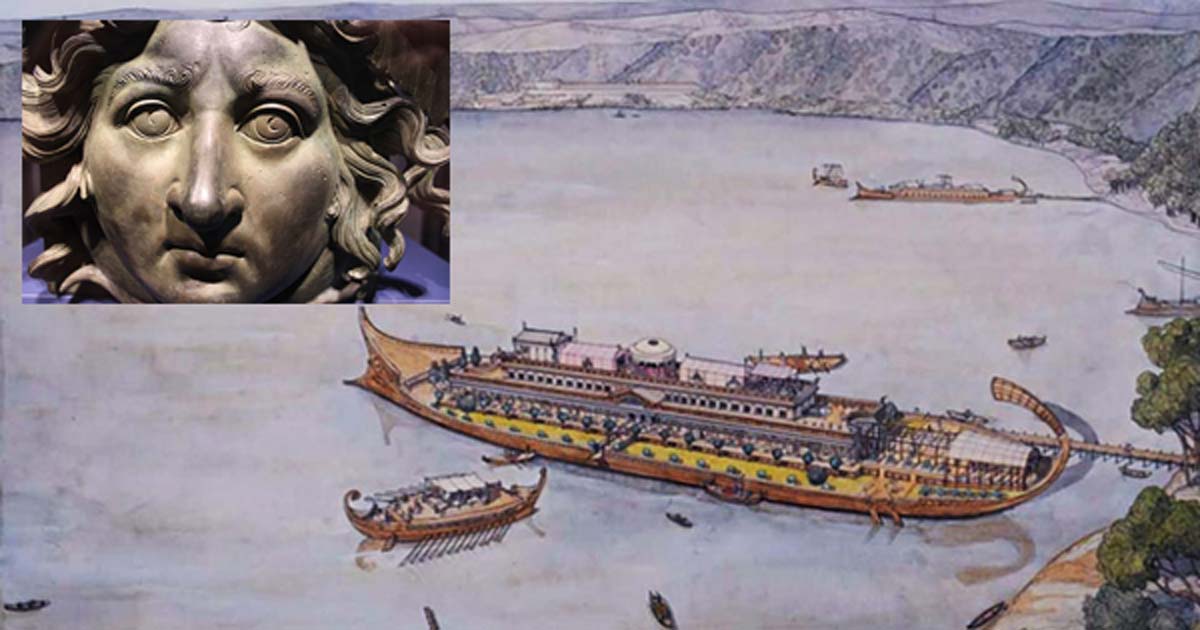
Comments
Either the German or the Italian aggression in WW2
Sorry about that. Sorry the ships were destroyed. I’ll speculate we didn’t target those vessels., but we were in the war to win. Mussolini was just a dummy who bet on the wrong side. You guys should have bitched more about locking up with the Nazis.
To Shame: There is a picture as to the condition, the boats in that condition were transferred to the museum (similar to the way Viking and other boats are displayed), the museum was/is at Lake Nemi, although this was to be assumed but not directly stated.
At the end of the original article, presented today, as it was presented on March 21, 2017:
“It was the night of May 31 when the museum was hit by the United States Army’s shells. The German artillery was destroyed, but the fire covered the entire museum and the ships too. The precious ships and their treasures were lost forever.”
A lot of artifacts survived though, especially metal and non-flammable things and are in the museum, along with fifth-scale models of the boats. On TripAdvisor, hundreds of pictures by visitors to Museo delle Navi di Romane, as well as historical pictures are displayed
Not in the article because it happened after 2017, is that a section of the mosaic floor from one of the Nemi ships ended up in a New York 5th Avenue apartment, incorporated into a coffee table. It was requested by, and returned to, Italy as a national treasure.
Yet not one mention how during WW2 they were destroyed. Horrible article and very misleading title. It gives no information as to where they were or in what condition during WW2 and who, why, how they were destroyed. Amounts to shillery and click bate at it's lowest form.